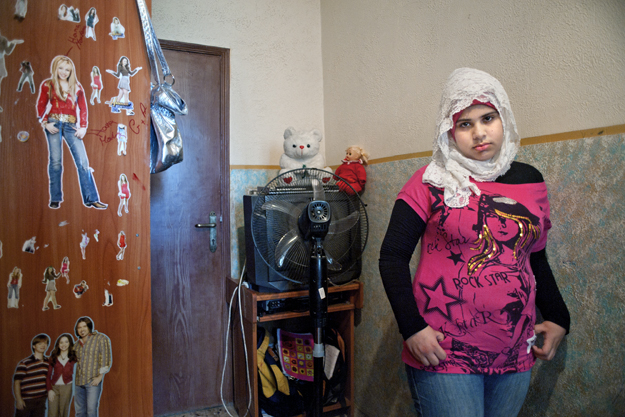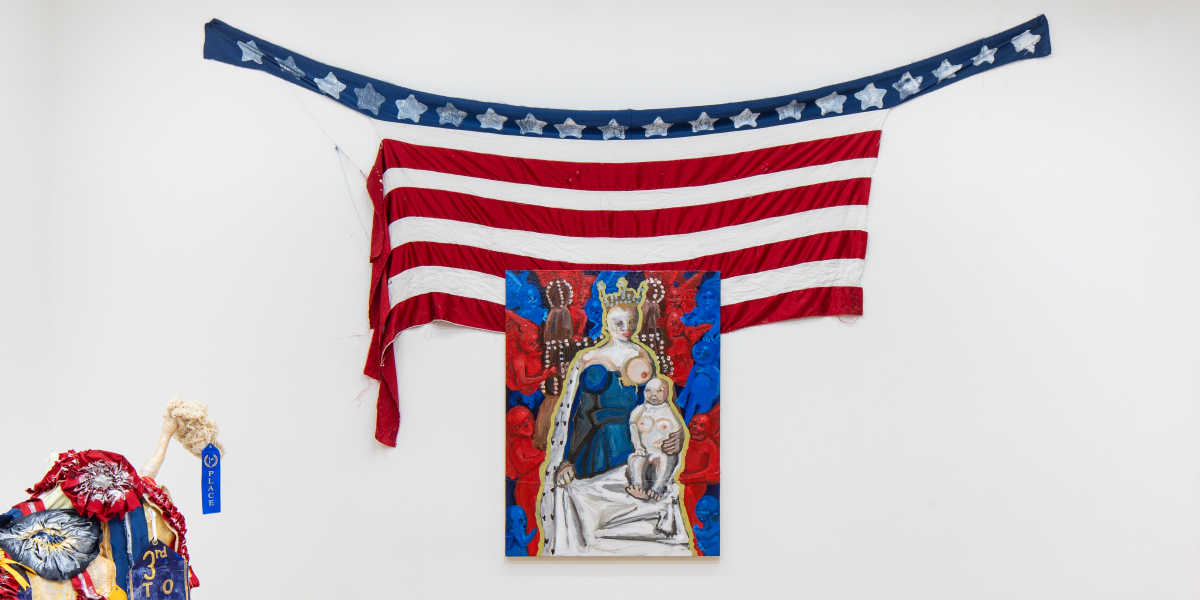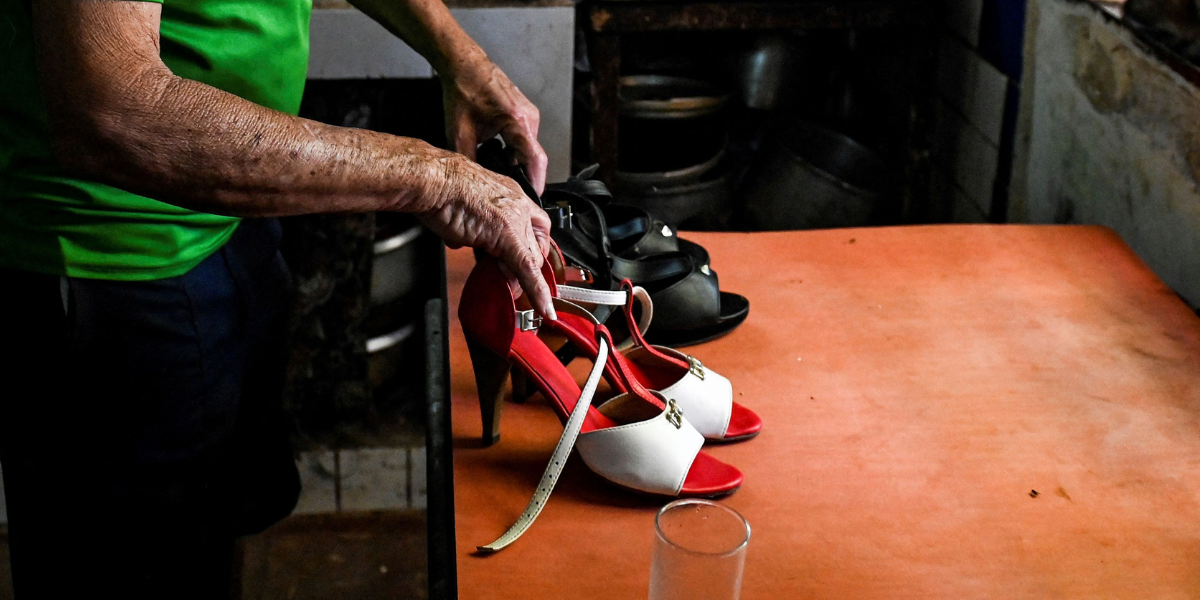I.
For her project a girl and her room, photographer Rania Matar took pictures of teenage girls in The U.S. and Lebanon in their rooms. She says of the series:
“This project is about teenage girls and young women at a transitional time of their lives, alone in the privacy of their own personal space and surroundings: their bedroom, a womb within the outside world.”

+

In May, Matar published a book featuring the series. It’s called “a girl and her room,” and I have it and I like it so much. I think you would like it too. It’s heavy and beautiful. The book contains the photographs from the series, two essays by other authors, and sometimes a line or two of text from each pictured girl. The photographs are so full of wonder but also hesitation, nervousness, uncertainty.


Matar has photographed so many girls in so many bedrooms, so many adolescents in their nests, looking at the camera or in mirrors or at the ceiling or at a book or looking forwards or backwards or both at the same time.

So many girls, so many rooms: Sidoine has purses hung on her wall in Belmont, MA, and between the purses she’s pasted logos like Sephora, Hollister, Zara, Abercrombie. Rocio in Dorchestor, MA, is small and pregnant, posing between a True Blood poster and a photograph of Rocio with her friends. Reem and Raneia share a small room with pink walls in the West Bank, and their bed stretches from wall-to-wall and is draped in a neon green comforter, and one plays a violin and the other holds a violin, ready to smile or not.

Art curator Susan L. Stoops wrote of the series: “A Girl in Her Room is a powerful statement about the persistence of Western ideals of beauty and the proliferation of media images and commercial products directed at young women and their insecurities — “Am I beautiful?” “Am I loved? Who are my friends? Who are my role models?”
Yes. This.


+
II.
When I returned home from my first year of boarding school, I returned to a room decorated for the girl I used to be and I felt ashamed of it, retrospectively embarrassed for the 10th-grader who’d plastered her closet in pictures of Jared Leto and Claire Danes, encircled the top of her walls in Absolut Vodka ads and created a dancing parade of Delia*s models over her bed.


When I’d moved into my dorm at boarding school I’d brought that girl with me, and her Leonardo DiCaprio shrine lasted just about as long as the haircut I’d arrived with because my best friend informed me immediately that my decor was too “teeny-bopper.” He was right. But it wasn’t just what he’d said, either, it was about me, too: I was growing up, getting serious about things like poetry and the future, and now I needed to be surrounded by artsy black-and-white postcards and artsy black-and-white photographs of my friends/muses. I needed to be surrounded by things that were real, not things that were fake. I needed to figure out how to tell the difference.



And when he’d said that, it reminded me of what Angela Chase said about dying her hair red in the first episode of My So-Called Life — — “When Rayanne said my hair was holding me back, she wasn’t just talking about my hair. She was talking about my life.”
He wasn’t just talking about my room, he was talking about my life.

To me, my room has always been my life. I’ve always been an introvert, a reader and a writer, which means I spend a lot of time in my room alone, and I like to look at things that inspire and excite me — poems, photos, pages from ‘zines, contact sheets, collages, birthday cards, things I’ve collected along the way from the people I love.

As a teenager, though, I marked my territory by filling every inch of available wallspace with seemingly everything I’d ever enjoyed looking at, ever: an impressive collection of Airwalk advertisements starring Jenny McCarthy, a poster from the last school play I’d been in, photographs from middle school graduation, oasis stickers, CK One ads, a muppets poster, old photos of my parents, picture-strips from the photobooth at Cedar Point.

Sometimes I think my room still looks like the room of a teenager. When you’re an adult you have all kinds of agency and can go wherever you want so there becomes this stigma of preferring to stay right where you are. Here I am, though.
+
III.
Raina Matar was born and raised in Lebanon and moved to the U.S in 1984. Most of her work, like her first book Ordinary Lives, focuses on women and children in the Middle East. She hopes to “give a voice to people who have been forgotten or misunderstood.” Matar lives in Massachusetts, teaches documentary photography at the Massachusetts College of Art and Design and spends summers in Lebanon, teaching photography to girls in refugee camps there.

Matar has four children. She started photographing her daughters and their friends after being fascinated by their transition from girlhood into adulthood — “the adult personality shaping up, and the self-consciousness now replacing the carefree world they had known and lived in so far.”

She noticed how self-conscious the girls were around each other and so began asking to photograph them alone, in a location of their choosing. Many chose their rooms: “I realized that was the nexus of a project. The room was a metaphor, an extension of the girl, but also the girl seemed to be a part of the room, to fit in, just like everything else in the room.”

First she photographed girls in the U.S.: “I was discovering a person on the cusp on becoming an adult, but desperately holding on to the child she had barely outgrown, a person on the edge between two worlds, trying to come to terms with this transitional time in her life and to adjust to the person she was turning into.”

Then she decided to take the project to the “two worlds I experienced myself as a teen and a young twenty-year old: the United States and the Middle East.” It personalized the project for her, and she “became fascinated with the similar issues girls at that age face, regardless of culture, religion, and background, as they learn to deal with all the pressures that arise as they become consciously aware of the surrounding world, wherever this may be.”

+
IV.
The first thing I do if you invite me over is investigate your bedroom: your books, photographs, the items on your dresser, if you have one. I love bedrooms, especially the ones with lots to look at. I envy my friends with spare, minimalist bedrooms where everything is hidden and neat, just like it was at IKEA, and all the photos are framed and not tacked onto that slab of corkboard I’ve been carting from apartment to apartment for fifteen years. But I also wish, when I enter their rooms, that there was more to see.
I’m just obsessed with rooms. I have a tumblr I made just for keeping track of rooms I like.
“When I photograph the girls, almost in all instances, I forget that I am not one of them, as if I am instantly thrown back in time,” Matar told PhotoEye in a recent interview. “Then I pass a mirror and it is a call back to reality for me.”

*
A Girl and Her Room is currently being exhibited in Germany at the Leica Gallery in Solms, where it will remain for the remainder of the month. In the fall and winter, there will be exhibitions in Boston, Atlanta, Portland and Daytona Beach.
Visit Rania’s website.








Comments
Looking forward to checking out her exhibition in Boston this fall!
Where and when will that be, exactly?
9/6-11/3 at BU’s Photographic Resource Center according to the schedule on her site: http://www.raniamatar.com/exhibitions/index.php
sweet totally going
Boston Autostraddlers meetup?
Thank you for this article! Very much relevant to my interests :)
This is so nice. Calming. Nostalgic.
brb cleaning my room
Exactly my thought.
this was beautiful and fantastic, thank you.
Thanks for posting this, it’s beautiful. A bedroom is a lot more profound than we think, in lots of ways.
Oh I love this so much.
“When you’re an adult you have all kinds of agency and can go wherever you want so there becomes this stigma of preferring to stay right where you are.”
Exactly this! This year I got a room of my own for the first time and I never really bothered to make it mine — there are no decorations, etc. and it is rarely in anything less than a state of utter chaos, because this was a Sign that I was going out and doing things and taking advantage of my newfound autonomy. But next year, next year I’ll make my (new) room my space again.
This is awesome, in the literal sense of the word.
I love this! It’s a great theme that I’ve been wanting to explore myself for a while. It’s fascinating how much a room says about a person, and to see how we decorate our rooms.
So I’m almost done remodeling the condo I’m moving into, and this made me even more excited for when I get to move everything in and decorate it all. #1 thing I’m excited about: bedroom won’t have boring white apartment walls yaaaaay! :D
i love this so much. if i meet someone, i don’t really feel like i know them until i’ve at least seen their house. people can tell you anything they want about themselves, but the things they surround them with sometimes seem truer.
I saw this exhibition in Phnom Penh last November and I loved it! There were so many photos and they were unframed, just up the walls of a staircase in a hotel. It was one of the best photography exhibitions I’ve seen in a while. Yay for it being here!
I think its slowly been building for a while, but this has indeed eased me into tearing down the ads and posters of my childhood room in my parents house. I was v. hesitant before, but it feels like time now, like Ive evolved passed that that version of myself. And also its suuuper hard to spot bugs on your walls.
Sidenote: IM GOING TO SPEND ALL DAY LOOKING AT ROOMS ON TUMBLR FOR DÉCOR INSPIRATION FOR MY NEW APT
Yes! Thankyou for sharing this. So fascinating and tender. I recently took down my teenage wall-sized corkboard, to make space for enormous bookshelves – whose contents I firmly believe are the grown-up equivalent of a huge collage of all my interests. To preserve all that wonderful stuff I’ve been scrapbooking it in self-adhesive albums, so my teenage bedroom will always survive in a little corner of whatever else is going on in my life.
Big love for the fact that she’s LEBANESE. Like meeee.
Puerto rican?
Nah, Lebanese
I feeeeel that.
I love this I would love it to go global. Like, it’s basically MA and Lebanon so I would love to see all of the us and ze world.
Habibi!! There are a lot of Lebanese-American women out there like Catherine and Elizabeth Keener! (Lebanese and Irish mix, which is hot! I’m a Greek-Leb mix). I don’t know about you, but I had tears in my eyes seeing the girls in the camp. Mostly because they look happy and comfortable in their rooms. I’ll buy the book to show my nieces and to support Rania. It’s such a positive thing in a world full of heartache and tragedy.
Habibi!
I know, and it’s great to see something so feminist coming out of Lebanon that’s just for women, especially as it portrays younger girls. I am Lebanese/British and a bit American too… I know some of these women but not a whole lot of them, in terms of literature and the arts xx <3
It warms my heart! I’m going to go eat some hummus now…My parents were born here and we were raised in New England, but we always had the culture and history in our lives. This book has reawakened my memories of being a young girl with the whole world ahead of me. Terrifying and exciting at the same time. I love the expression on each girl’s face. I may have to head back to Boston to see the exhibit.
“As a teenager, though, I marked my territory by filling every inch of available wallspace with seemingly everything I’d ever enjoyed looking at, ever: …”
after i moved out of my parents’ house, they had my room repainted. the painter said he’d never seen so many pushpin holes in one room before. (guess i got the poster putty memo too late?) i can’t remember why it seemed so incredibly important for there to be visual information on every inch of wallspace. magazine pages, photos of friends, posters of bands, cool eye makeup… one big collage.
Love it! My bedroom from when I was a fifteen year old remains untouched. I moved out at 15 and nothing has changed. It’s definately a mind fuck to visit it. So many emotions plastered all over the walls.
This is lovely. I’m quite fascinated by bedrooms, as well; a couple years ago I wrote a creative nonfiction piece on the six or so bedrooms my sister and I have shared over the years.
I’ve always been jealous of people who have managed to decorate their walls and personalise their room – even if that means they’ve plastered their walls with posters ripped from Girlfriend magazine, which I’ve never been interested in doing. The only impression of me that you’d get from my room is that I’m something of a hoarder, since I have piles of stuff all over the floor. I’m not really a hoarder, it’s just that I have a few spaces that I like to keep perfectly tidy – my bookshelf, dressing table and my desk – since I can never get the whole thing tidy. So everything else just goes on the floor.
I’m obsessed with this. I am so obsessed with rooms and spaces and things and nick-nacks and momentos and things that should be trash. I want to keep all the things and pin them to the wall and hang them from little bits of string and just stare at them all day. So that is what I do, basically.
I’m absolutely in love with this project.
The comparison is very impressive. Love it.